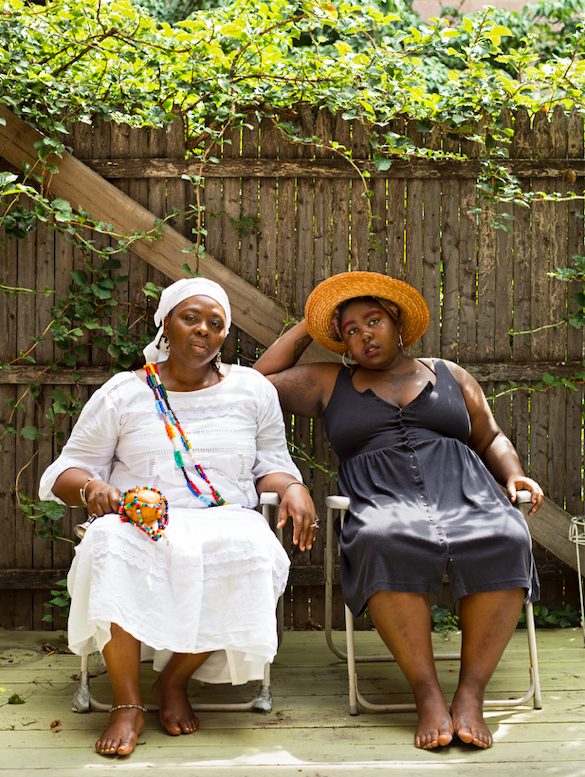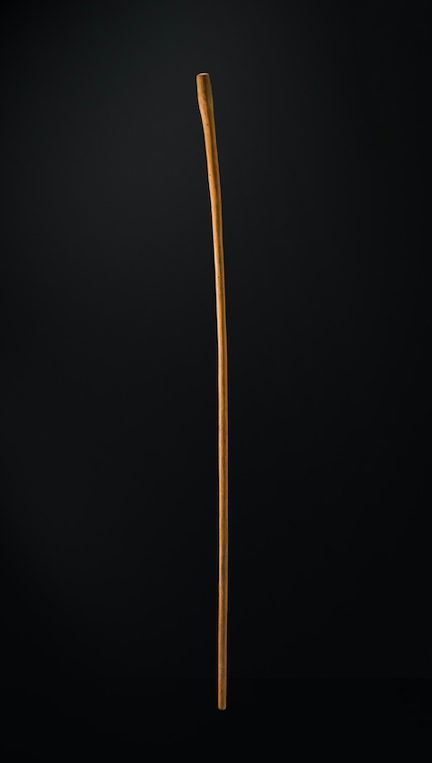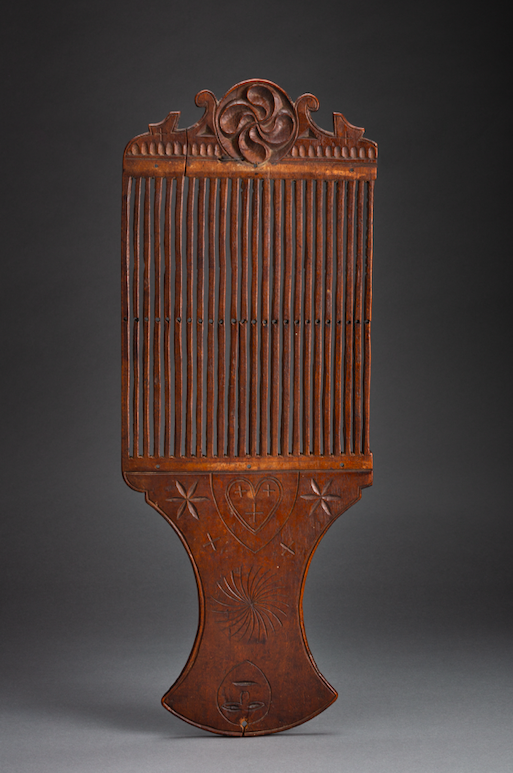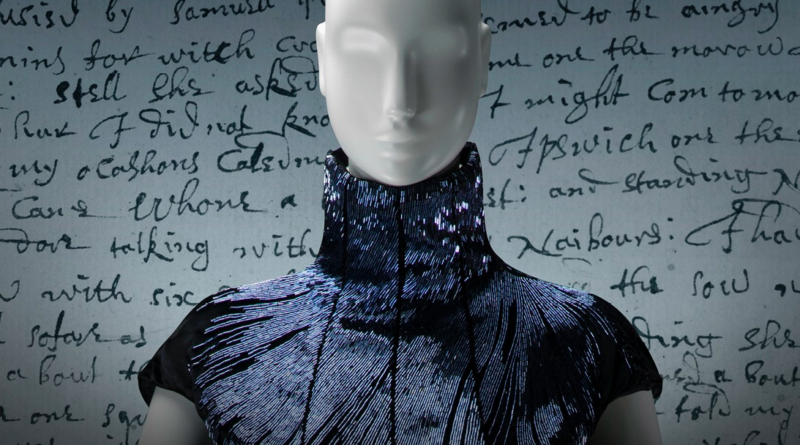INTERVIEW: This PEM exhibition reclaims, reckons with Salem witch trials
Photo: Alexander McQueen. United Kingdom. 1969 – 2010. Evening dress (detail), from the In Memory of Elizabeth How, Salem, 1692, Ready-to-wear collection, fall/winter 2007. Velvet, glass beads, and satin. Gift of anonymous donors in London who are friends of Peabody Essex Museum. 2011.44.1. Peabody Essex Museum. Photo courtesy of Bob Packert / Provided by PEM with permission.
Salem, Massachusetts, has a long-lasting reputation for the witch trials that occurred there in the 17th century. To this day, that horrific episode still reverberates, whether it’s in the Halloween festivities that pack the streets in October or the many witch-themed souvenir shops that line the main drag of Essex Street. In the middle of downtown Salem is an institution that strives to tell the true story of the trials, focusing on the actual history and the artistic objects they have been inspired by this sad, tragic event.
The Peabody Essex Museum, known as PEM, has begun a renewed effort to publicly display its vast trove of witch trial documents and objects from its collection. In 2020, the museum held a successful exhibition centered on the 17th century trials, and now they have expanded upon that vision with The Salem Witch Trials: Reckoning and Reclaiming, which is on view through March 20.
This exhibition combines the old with the new. There are still those unique documents and objects from the time period, including a wooden cane from 1690 and a loom owned by Rebecca Putnam, but now they are brought into curatorial conversation with pieces by Alexander McQueen from his 2007 collection In Memory of Elizabeth How, Salem, 1692. McQueen, the late British fashion designer, was actually a descendant of How, one of the women who was condemned and hanged during the trials, according to press notes. Another addition to the exhibition are selections from Frances F. Denny’s photographic series, Major Arcana: Portraits of Witches in America. Ultimately, this Reckoning and Reclaiming is a marriage between the historic and the novel, the forgotten and the familiar.
“We presented a witch trials exhibition in 2020, and that was the first time the museum had presented the 17th century authentic materials, so the trial documents and some objects, for over 20 years,” said Lydia Gordon, one of the exhibition co-curators. “It really brought people back to that 17th century time and history. [They] did a beautiful job of portraying the human aspect of the story and really giving empathy toward the people that were wrapped up in this crisis, and tragically some of them didn’t make it out alive. And so given the complexities of 2020, that exhibition, which opened in September, posed some challenges in terms of us being able to share it widely with the public because of the pandemic restrictions, but we got a lot of great interest. And so we knew we wanted to do something again this year.”
The co-curators, including Gordon, Dan Lipcan and Paula Richter, endeavored to cover similar themes, but they didn’t want to solely focus on the 17th century. Instead, they were interested in contemporary art and how the stories from centuries ago still live on today.
“And so the idea was to bring in contemporary artists in dialogue with the historical and the authentic material … push the conversation forward into today, and into today’s narrative and into today’s context,” Gordon said. “And so for the two contemporary responses to the witch trials, the artists have ancestral links to the trials, whether they are folks that served on the judiciary committee or those that were accused. It was important to us that artists be descendants of the 17th century crisis; that was important to us, and we’re really excited to showcase Frances F. Denny, a contemporary photographer, as well as the celebrated fashion designer Alexander McQueen.”
When PEM visitors first enter the exhibition space, they will learn about the 17th century trials, which Gordon said helps to ground the entire experience. There are many objects and documents to peruse, and the co-curators have drawn a narrative that speaks to the social and contextual fabric of that moment. This was a time period when religious fervor was the rule of the day, and false accusations were levied against the most vulnerable in society, including girls and women.
“A lot of the 17th century objects we have are from those people who were living during that time and experiencing these accusations, who were writing petitions on behalf of their neighbors that were being wrongfully accused,” she said. “We have some objects that were part of sometimes their home, like the architecture of their home, gifts, and we hope that these objects sort of embody the voices and the experiences of the very real people that were involved. And then we used a case study of a woman who was accused in the trials, Elizabeth How, and we sort of traced her story into a section that presents the Alexander McQueen dress and collection that he made inspired by Elizabeth How, who he is a descendant of. Then following that the visitor is greeted with Frances Denny’s portrait photography series, Major Arcana: Portraits of Witches in America, and then we end with a response and a place of reflection. And so there’s multiple ways to experience the gallery, but conceptually this is how we laid it out.”
The Denny photographs are a highlight of the exhibition. Gordon said that the photographer discovered she had an ancestral link to one of the judges from the Salem witch trials, in addition to a woman who had been accused of witchcraft 20 years earlier in a different part of Massachusetts.
“So Frances, being a portrait photographer, all of her work is really dedicated to the construction and the spaces that build these modes for female identity and the construction of female identity and femininity, and she was really interested in thinking about this relationship between our understanding of a 17th century witch, which is an identity that no one was claiming for themselves,” Gordon said. “It was a word that was levied on people, mostly women, to control and silence them. They wouldn’t have identified as a witch in Salem and throughout history; however, we know that there is a contemporary community of witches that self-identify across the spectrum.”
Denny was interested in understanding who occupies the witch identity in the 21st century and what does that identity mean. In particular, she wanted to explore what that identity looked like and what type of practices it entails. For Gordon, Denny’s photographs redefine and diversify what a witch is today.
“There are 13 portraits out of the 78 that she photographed in total,” Gordon said about the exhibition’s selections. “It introduces individuals who self-identify as a witch in a way that moves beyond the Anglo-European context, so it introduces and really celebrates those that have cultural roots, that are herbalists, that are Tarot readers, that have a reverence for nature, shamans. All types of witches are present in the gallery. I think it very much gives some representational justice to those that were othered and ostracized, and their voices were historically silent.”
By John Soltes / Publisher / John@HollywoodSoapbox.com
The Salem Witch Trials: Reckoning and Reclaiming is now on view at the Peabody Essex Museum through March 20. Click here for more information and tickets.
Revised 11/21


American artist Cane, 1690 Oak 44 7/8 x 5 x 1 inches (113.983 x 12.7 x 2.54 cm) Gift of Allen Jacobs, 1918 106960.2 © 2015 Peabody Essex Museum. Photograph by Walter Silver. 
Artist in Salem, Massachusetts Tape loom owned by Rebecca Putnam, 1690–1710 Oak 24 x 9 x 1/4 inches (60.96 x 22.86 x .635 cm) Museum purchase, made possible by an anonymous donor, 2001 138181 © Peabody Essex Museum. Photograph by Kathy Tarantola.

